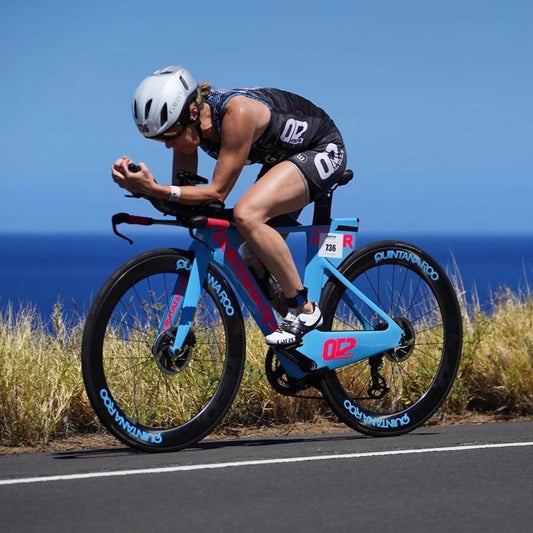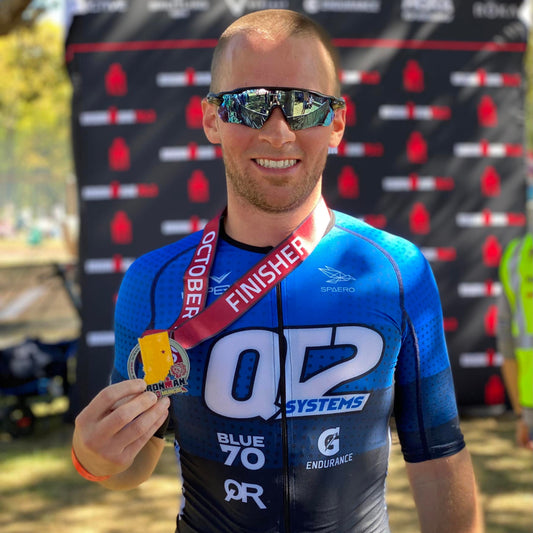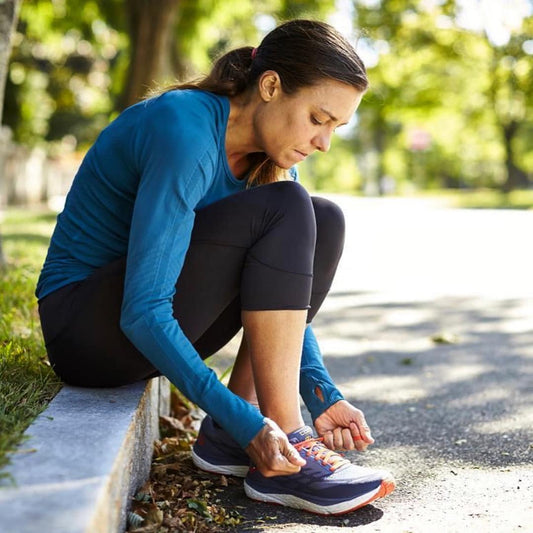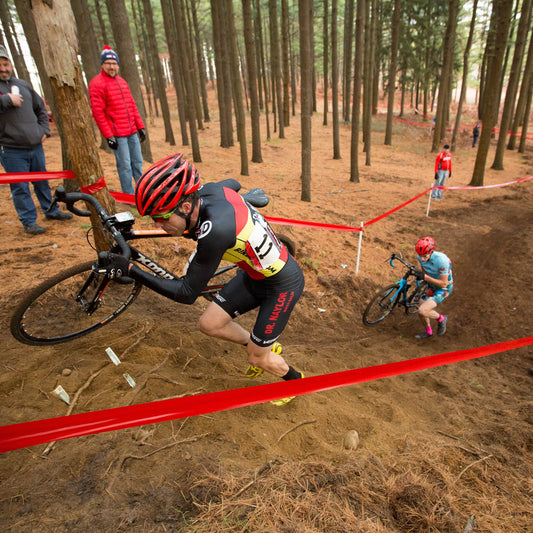Living in Florida allows me the luxury of being able to open water swim almost year-round. Considering I get a little bit of an attention deficit in the swimming pool, I feel fortunate to have the Gulf of Mexico at my beck and call. I have spent over 15 years swimming in the Gulf and am here to share a few training tips for the open water.
Let us start with a few reasons as to why open water swimming is advantageous over pool swimming. Keep in mind these are not scientific reasons, just my own opinion.
1. Staring at the sand patterns, little fish and sand dollars are much more entertaining than a black line.
2. Feeling your toes in the sand while walking to open water is much nicer than feeling hot cement or a wet, slimy tile floor.
3. Salt water (or fresh water) is more therapeutic and does not leave you with dry skin and smelling of chlorine all day long.
4. The waves, currents and changes in the open water keep things a little more exciting than swimming in the same color, temperature and stillness of a pool.
5. Being out in the sunshine on a beach or the side of a lake or pond and taking in the scenery can put a smile on just about anyone.
6. And the number one reason open water swimming is better than pool swimming…. we RACE in the open water, why not TRAIN in the open water?!
Before we discuss some ideas for open water workouts, let’s go over a few basic safety reminders.
1. Never swim alone! This is pretty much self-explanatory, but it is always best to have at least one swim buddy in case something goes wrong. The only exception to this rule, is if you are swimming on a beach with a lifeguard and a lot of other people around. Even then, it is still safer to have a buddy.
2. Wear a brightly colored swim cap. (Yes, even if you are a guy or girl with short hair or even bald!) Why? You are easier to spot!
3. KNOW THE WATER! This is even more important if you are swimming in an unfamiliar area. Look at the water temperature. Wetsuit or no? Know the direction of the current, how big the waves or chop is and if there are any rip tides in the area. If the water is cold, do a few water splashes on your face and acclimate a bit before going all out on your swim. Know what to do if you get caught in a rip current! (In a nutshell, swim parallel to the shore until you are out of it. Do NOT try to fight it by swimming towards the shore!)
4. Inspect your entry/exit. Are there any big “dips?” Are there any obstacles, such as shells, rocks or debris?
5. Use a Swim Buoy so you are visible to other swimmers and any watercraft that may be in the area.
Now, we get to the part on transforming a typical steady open water swim, into an actual training session! With a little creativity, it is extremely easy to move your pool workout into the open water.
Working on speed and strength in the open water can be done just as you would in the pool with slight modifications. There is no pool clock in front of you, so you just need to get a little “creative” for your sets!
1. Use your watch and go on time. If you know you swim a 1:40/100 and you have 10x100 at best effort, with 20 seconds recovery, then go hard for a mental estimate of 1:40 then swim easy for 20 seconds.
2. Use stroke counts vs yards. Using the 100 again, just estimate your stroke count that you do in the pool for a 100 and swim that many strokes as hard as you can. For example, if you normally swim 20 strokes per 100, count to 80 in the open water while going hard. Swim easy for the 20 second recovery.
3. You can guess the distance or time and just complete the sets as best as you can. After all, you are still swimming and getting the “essence” of the workout!
If you want to work on strength, you can easily swim with your pull buoy in the open water. Just do a pull set, exit the water, put the buoy away and get back in to do the remainder of your swim. You could also just move it to one hand and do some one arm swimming drills, while holding the buoy. Alternate back and forth. Pull for a few minutes, move the buoy to your right hand and swim with your left arm only, then move to your left hand and swim with your right arm only in a continuous rotational pattern. Don’t forget about the drill sets you do in the pool! These are also easy to replicate in the open water.
Finally, here are some specific “fun” sets to add to your open water “experience!”
ENTRY/EXIT PYRAMIDS
Standing on the water’s edge, pretend that you are about to do a race. Run out into the water until the water is just below your knees, then switch to a high knee run until the water is at your knees or just above. Do 2 to 3 “dolphin dives” and then swim 30 strokes hard, turn around and head back to shore, exiting the same way you entered, except reverse. Exit with 2 to 3 dolphin dives, then a high knee run and finally a run up the beach of approximately 25 yards. Catch your breath, this time enter and exit the same way except swim 20 strokes hard. Then 10 strokes hard with the entry and exit pattern. Now it is time to go back up the pyramid using 20 strokes, then 30 strokes, etc.
SPRINT TO THE FRONT GAME
Get several buddies. The fewer buddies will mean more sprinting, less recovery. The more buddies you have will mean longer sprint sets but longer recovery! Swim in a straight line, so that each person is drafting off the feet of the person in front of them. The person at the end of the line, will swim out to the side of the line sprinting to the front. Once they take the first position, the next person who is now at the end of the line, will sprint to the front and so on, until you have rotated through your whole line. Then do a group recovery for 2 minutes and repeat for as many times as you like.
SWIM/RUN SETS
Enter the water from the beach, just as you would in a race using the run/high knees/dolphin dive/swim pattern. Swim a designated time (example, 5 minutes,) distance (example, quarter mile,) or number of buoys and exit the water. Run down the beach a designated distance (example, quarter mile) or time (example 10 minutes) re-enter the water, swim your designated distance or time and continue this pattern for as long as you like. Just be sure to turn around at some point and head back to your starting point while you still can!
DRAFTING
Since drafting on a race can save you time and energy, it is important to practice this in your swim training. With your swim buddies, practice drafting to the side of your buddy (off their hip and in their swim wake) or just behind their feet. The more comfortable you become with this, the better you will do on race day. When practicing, incorporate speed surges. Have whoever you are drafting off, surge for a few seconds and practice keeping up. Take turns being the drafter and the draftee!
SIGHTING
With no black line like the pool, swimming in the open water presents a challenge for swimming straight. It is important to practice your sighting in training. Since there are no big sighting buoys marking the course, like on race day, you will have to find a landmark to sight off. Practice using a certain stroke pattern, such as sight every 5 strokes, using your landmark.
ANNOY YOUR BUDDY
As we all know, swimming during a race, especially a large race can be daunting at times, to say the least. The beginning of the swim is a washing machine of elbows, fists and feet all flailing around you. Your heart rate is high, and nerves abound. Round up a decent sized group of friends. Practice getting into a tight cluster on the beach. Run hard, as a group, into the water and practice your entry and the swim portion, staying in your tight group. Annoy your friend by grabbing their feet, softly elbowing them or tapping their head. Get used to this feeling of being jostled and trying to swim while settling your heart rate.
BILATERAL BREATHING
Knowing how to breath on both sides (bilateral breathing) is a necessary skill in the open water. If you have waves or chop coming from one side and it happens to be the side you like to breathe on, you are going to get constant water in your face and mouth! Be sure to become comfortable breathing on BOTH sides! Practice this every time you are swimming!
SETTLING YOUR BREATHING
Race starts and trying to catch up to a swim pack in front of you really elevates your heart rate and breathing. During your swim training become comfortable with learning how to settle your heart rate down and getting into a good rhythm WHILE swimming versus stopping to let it settle. Practice sprinting out to the water and starting your swim immediately then work on getting the heart rate settle without stopping or slowing down too much. While you are swimming, incorporate surges that are long enough to get your heart rate going, then slow your swim down while allowing your breathing and heart rate to settle, again without stopping to do so. Tell yourself things such as “stroke, stroke, breath.” “Reach long and breathe.” “Once I get to the first turn buoy, my breathing will settle.” Chant anything you can in your mind, that will allow you to focus on settling down.
Using some of these suggestions will make your open water swim both more productive and enjoyable, as well as make you super prepared for race day!
This post was written by Coach, Jackie Miller.





